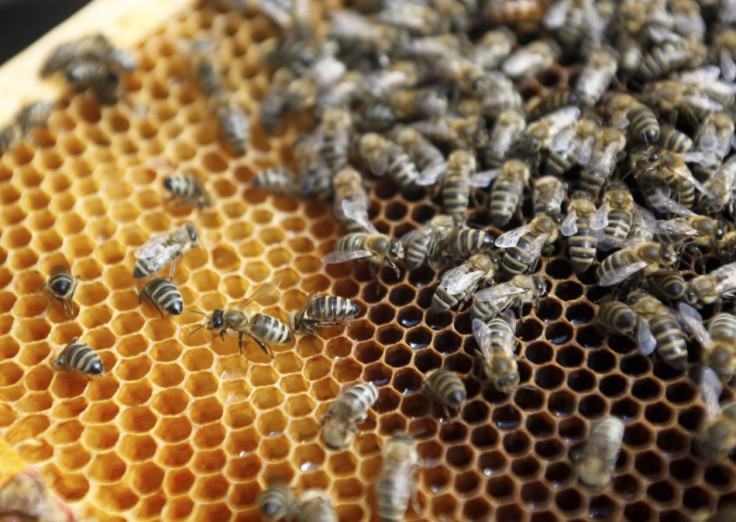Fly Parasites Killing Bees: Expert Feels Phenomenon Could Affect Agriculture in U.S. [EXCLUSIVE]

Researchers at San Francisco State University appear to have discovered one of the reasons for the widely reported disappearance of beehives in the United States. They have found that a fly parasite can turn a honeybee into a confused "zombie" before killing it.
The researchers say a fly first inserts its eggs in a bee's abdomen. The bee then literally wages a life-and-death battle against the invaders. Ultimately, the fly larvae consume the bee's internal organs and muscles, leaving it an empty shell. After seven days, the bee dies and the fly larvae exit its body.
John Hafernik, the San Francisco State University professor of biology who led the research study, said the parasite has the potential to be a real problem for honeybees across the United States.
In an exclusive interview with the International Business Times, Hafernik said the disappearance of bees could have an impact on agriculture in certain areas because of the key role they play in the pollination of plants.
Here are some excerpts of the Q-and-A:
Could you elaborate on how fly parasites kill bees?
The fly larvae (maggots) consume the internal organs and muscles of the bee, leaving the bee as an empty shell.
Do you have any clue on how the fly manages to insert its eggs into the bee's body?
The female fly has an egg-laying organ (ovipositor) at the tip of her abdomen that she can extend and pierce the body of a bee. Usually, females land on the top of a bee's abdomen and penetrate one of the membranes between abdominal segments.
What happens to the bee that is still alive after seven days?
Once a parasitzed bee abandons its hive, it does not live more than a day. The maggots continue to develop inside the dead bee and erupt from it in about a week and form pupae nearby in which they transform into adult flies.
Is it the real reason for the disappearance of the bees? What else could be the cause for the disappearance?
We don't know yet if this is a main reason for the increase in beehive failures. Bees are affected by a number of pathogens and parasites often occurring together within the same hive.
Is the bee population in California and South Dakota in real danger due to the fly menace?
It has the potential to be a real problem for honeybees across the U.S. Time will tell.
Is there any way to stop it?
There's no cure at this point. We hope to learn more about how the parasite finds its hosts and interacts with them in the hopes of finding a weak link that can lead to a way to control it.
Is it going to affect the survival of the living things on the Earth since pollination is crucial for survival?
At this point, we don't know if the fly will cause major problems for honeybees. In North America, the fly has coexisted with native bees for a long time, so new effects on native pollinators are not likely.
If the fly were accidentally introduced to another continent, it might affect native bees there. If the fly turns out to be a significant problem for the non-native honeybee in North America, then it could significantly impact agriculture in areas where it occurs. However, we have not demonstrated that it is a significant problem.
Do you think your study has solved the mystery behind the disappearance of the beehives in the U.S.?
We do not claim to have found the cause of colony collapse disorder. We have discovered a parasite associated with one of its symptoms.
We have not proven that the fly is responsible for significant hive losses. We have shown that it infects worker bees in the San Francisco Bay Area; Bakersfield, Calif.; and South Dakota.
As is often the case in science, further study is needed -- in this case, to evaluate the impact of this fascinating relationship between fly and bee.
© Copyright IBTimes 2025. All rights reserved.





















